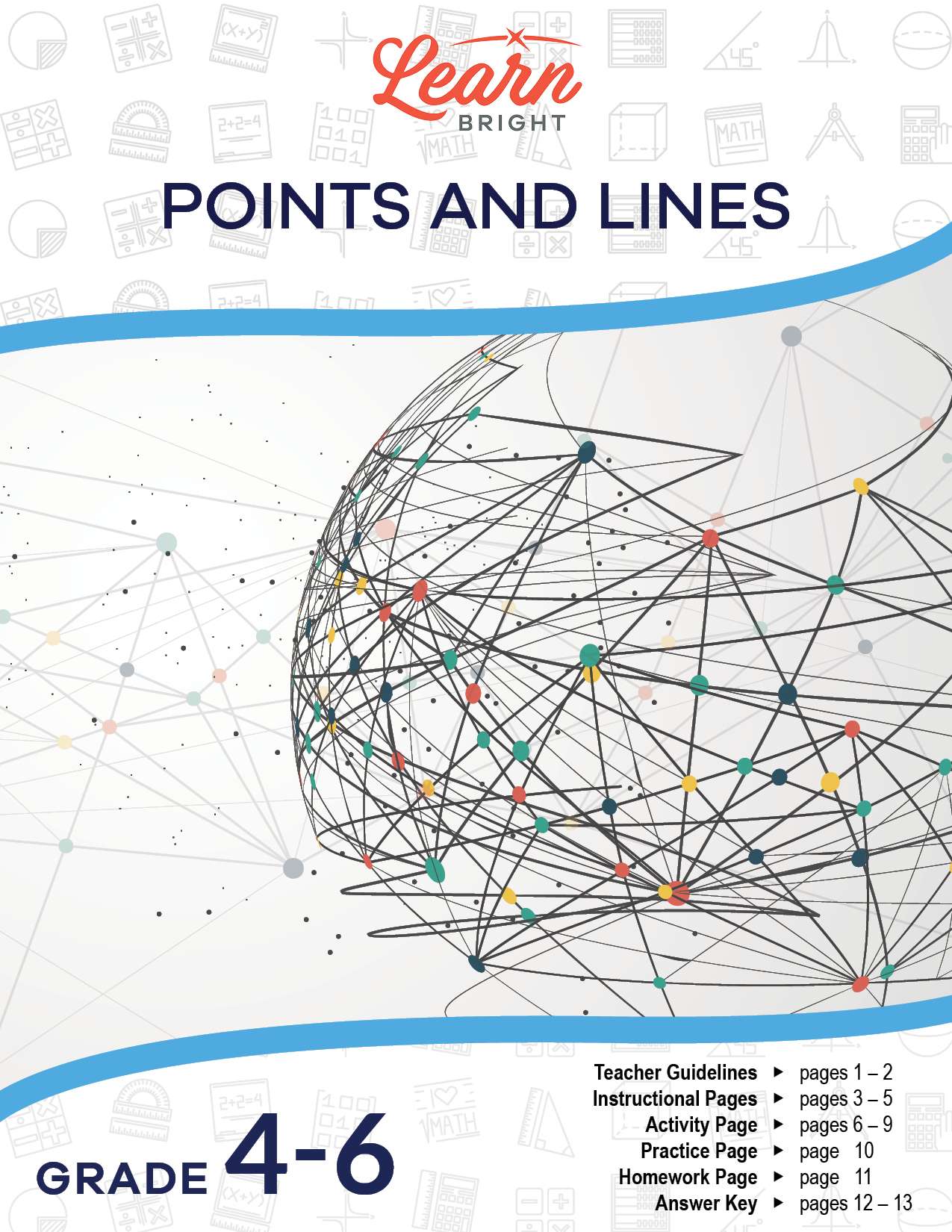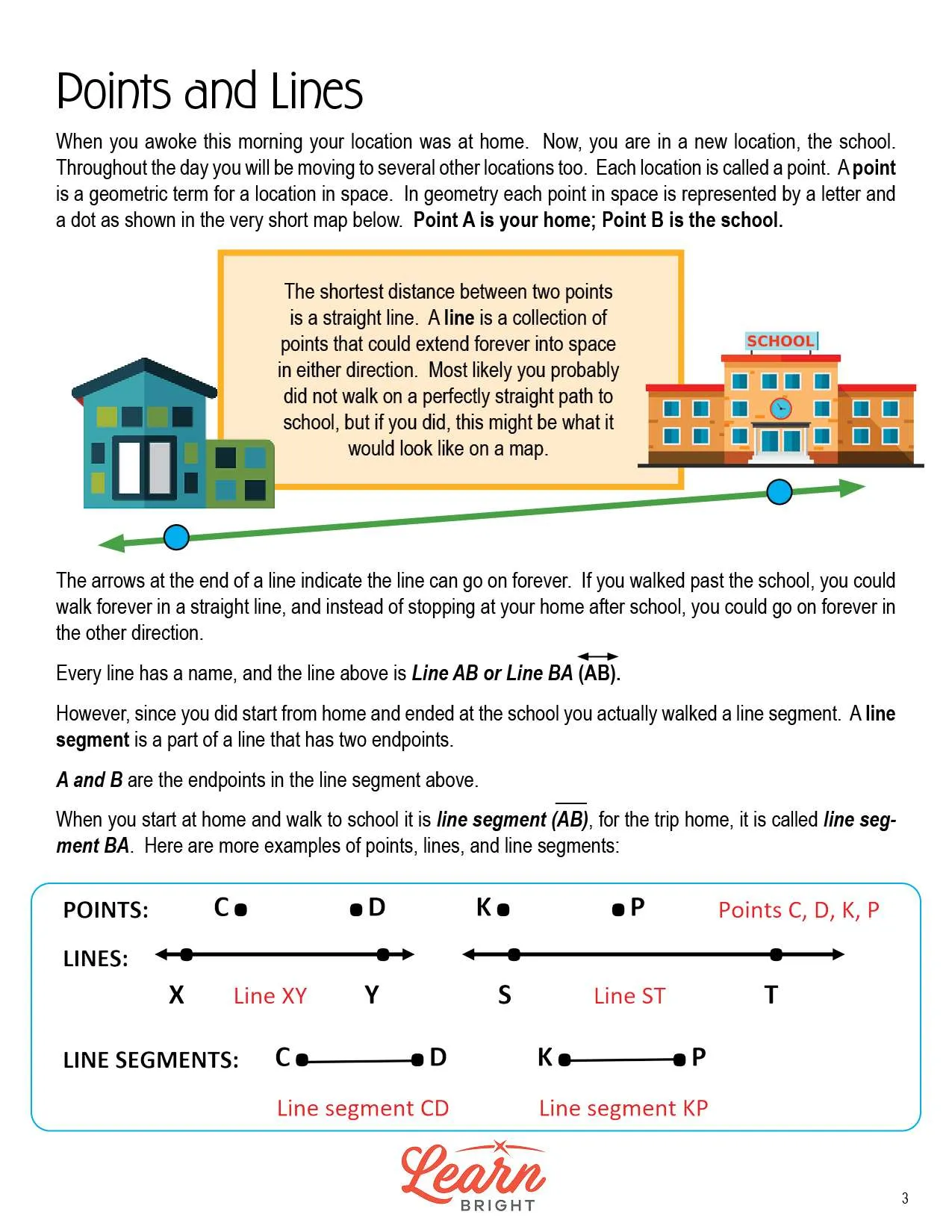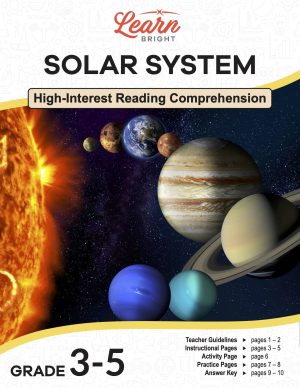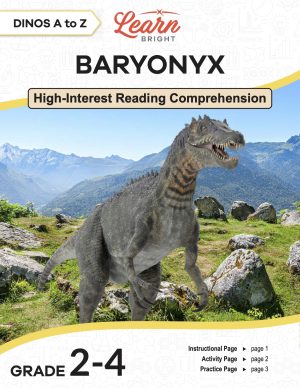Description
What our Points and Lines lesson plan includes
Lesson Objectives and Overview: Points and Lines introduces students to the concepts and terminology of points and lines. At the end of the lesson, students will be able to identify, name, and draw points, lines, line segments, rays, and perpendicular and parallel lines. Identify these in two-dimensional figures. This lesson is for students in 4th grade, 5th grade, and 6th grade.
Classroom Procedure
Every lesson plan provides you with a classroom procedure page that outlines a step-by-step guide to follow. You do not have to follow the guide exactly. The guide helps you organize the lesson and details when to hand out worksheets. It also lists information in the blue box that you might find useful. You will find the lesson objectives, state standards, and number of class sessions the lesson should take to complete in this area. In addition, it describes the supplies you will need as well as what and how you need to prepare beforehand.
Options for Lesson
Included with this lesson is an “Options for Lesson” section that lists a number of suggestions for activities to add to the lesson or substitutions for the ones already in the lesson. One optional addition to this lesson is to take your students outdoors to discover lines and points in nature and have them draw what they observe. To add to the lesson activity, you can laminate your students’ activity cutouts for future use or for taping and removing onto or from a piece of cardboard or other background. Finally, to extend the lesson, you can introduce your students to other shapes made of line segments and lines.
Teacher Notes
The teacher notes page includes a paragraph with additional guidelines and things to think about as you begin to plan your lesson. This page also includes lines that you can use to add your own notes as you’re preparing for this lesson.
POINTS AND LINES LESSON PLAN CONTENT PAGES
Points and Lines
The Points and Lines lesson plan includes three content pages. You can think of each place you go in a day as a different point. In geometry, a point is a term for a location in space. Each of these points is represented by a letter and a dot.
The shortest distance between any two points is a straight line. Lines are collections of points that can extend into space forever in either direction. If a line has arrows on its ends, this indicates that the line goes on forever.
Every line also has a name. For example, if you have a line connecting points A and B, the line is called Line AB or Line BA. If you go from point A to point B, it’s Line AB. If you go from point B to point A, it’s Line BA.
Line segments are a part of a line that has two endpoints. In the line with points A and B, A and B are the endpoints. The lesson also shows various points, lines, and line segments and identifies their names. You can name every point, line, and line segment.
Rays are another type of line. Rays contain one endpoint and extend forever in one direction. Planes are flat surfaces, kind of like pieces of paper, that extend forever in all directions.
You can see points and lines everywhere. There are lines that make up the walls of the room you’re in. To cut a pizza, you cut in a line. You can draw lines simply by connecting any two points. Lines sometimes cross each other and sometimes do not. Some lines connect at 90 degree angles, like in the corners of a room.
Types of Lines
There are three basic types of lines: parallel lines, intersecting lines, and perpendicular lines.
Parallel lines are two or more lines that never meet in space or on a plane. No matter how long the lines are, they never meet. An example of parallel lines are the vertical lines in each corner of a room.
Intersecting lines are the opposite of parallel lines. They always meet or cross in space or on a plane. Intersecting lines sometimes look like they won’t meet, but if they both continue on forever, they will meet eventually.
Perpendicular lines meet at right angles, like in the corner of a room. A line that meets another line at a right angle is called a perpendicular line. For example, the lines in a square or rectangle are perpendicular lines.
Architects, builders, engineers, artists, and nearly everyone else in the world use different types of points and lines for an infinite number of purposes. When drawing a picture, you use points and lines. Every time you write the letter X, you’re drawing intersecting lines! The letter H includes parallel lines, while the letter T is includes perpendicular lines. Lines and points are everywhere!
POINTS AND LINES LESSON PLAN WORKSHEETS
The Points and Lines lesson plan includes three worksheets: an activity worksheet, a practice worksheet, and a homework assignment. You can refer to the guide on the classroom procedure page to determine when to hand out each worksheet.
CREATING POINTS, LINES, AND LINE SEGMENTS ACTIVITY WORKSHEET
For the activity worksheet, students will first cut out each of the points and lines printed on the worksheet. They will then use them to create different types of points, lines, and line segments. Next, they will draw and label their points, lines, and line segments using the spaces provided on the worksheet. Finally, they will follow their teacher’s instructions to create more points, lines, and line segments.
MATCHING PRACTICE WORKSHEET
The practice worksheet asks students to first match lesson vocabulary terms with their definitions. They will then write down the names for eight shapes made of points and lines.
POINTS AND LINES HOMEWORK ASSIGNMENT
For the homework assignment, students will sketch and correctly label different shapes according to the directions.
Worksheet Answer Keys
This lesson plan includes answer keys for the practice worksheet and the homework assignment. If you choose to administer the lesson pages to your students via PDF, you will need to save a new file that omits these pages. Otherwise, you can simply print out the applicable pages and keep these as reference for yourself when grading assignments.









